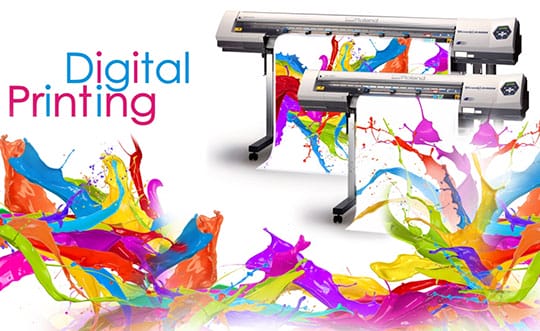Digital signs are turning into the flashy wave of the future. With the ability to combine text, images, and videos, many retailers are turning to the more flexible and versatile option when engaging with customers through advertisements and sale signs. While this may save money and time and create more engaging content, the switch from print to digital has had an interesting effect on the print industry.
This has caused the print industry to get more creative to keep its customer base active. Read on to learn what changes the print industry has made in an attempt to keep up with the power of digital advertising.
The Growth of the Digital Age

When digital signage first arrived, many advertisers and government facilities embraced this new version of signage. Digital signage was quite attractive due to the savings, real-time updates, and potentially engaging content.
With a digital sign, the only investment is initial installation and some maintenance and repair spending. Additionally, this type of sign also allows for immediate changes and updates, so warnings about changing schedules, car accidents, and new sales can instantly reach consumers with no delay for printing and posting.
Finally, the interactive elements possible with digital signs, especially in retail, are incredibly attractive to many large companies. For example, some stores use signs with built-in cameras to allow customers to preview themselves in a certain outfit, different makeup, or a variety of hairstyles.
The elements that are inherent in digital signs are forcing the print industry to adjust their preconceptions about the modern consumer and the needs of a modern advertiser.
Combination Packages

Some print retailers are trying to get ahead of a decrease in revenue by combining digital and printing services. They view their participation in digital signage as an extension of their current industry, developing tools that allow their customers to take advantage of digital signs while maintaining a strong relationship with their vendor for any persisting printing needs.
So far, most print retailers haven’t experienced a drop in their revenue for wide format printing, as many small advertisers don’t consider digitals signs for these purposes.
Improving Technology

While the digital age has taken over many of the aspects once occupied by printed signs, there are still some elements in advertising and packaging were print is still essential. It may be many years before digital completely replaces printed magazines, newspapers, labels, and full-color advertisements, but in the meantime, the print industry intends to develop methods that showcase the durability, vibrancy, and visual appeal of a printed sign.
Whether large or small, often the reason for changing printed signs isn’t a changing message, but fading ink and ripping paper. To combat these issues; the print industry has released increasingly improved printers, inks, toners, and paper.
Color, especially, is something digital advertisements have difficulty replicating. Ensuring that ink and toner stays as bright as the day it was printed is pushing manufacturers to create UV ray, dust, and contaminant resistant inks and paper.
Interactive Print

For advertisers, one of the most attractive things about digital signs is the potential for interaction with customers. Whether a camera can capture their image and display it with a clothing overlay or a sign can change depending on the age, height, or spoken language of the consumer, digital ads have a valuable advantage due to their versatility.
With creativity and daring, the print industry has shown that ads don’t have to be digital to impact consumers and encourage them to interact with a sign. Some of the most famous examples include a lenticular advertisement against child abuse that looks different depending on the height of an individual. Light projected on a billboard can allow a person to cast a shadow that stands between the silhouettes of an angry adult and a cowering child and posters can be peeled back to reveal a different image beneath.
None of these rely on digital technology to invite interest; instead, their message and ingenuity excites consumers and prompts them to care about a product or an idea.
The End of Digital

While for the large organizations and prosperous companies, the installment costs and maintenance fees for digitals signs are negligent, for small companies, print is still the more cost-effective solution. In fact, studies have found that since 2014 more than 40% of advertisers haven’t even considered digital advertising, about 30% consider them and plan to use them in the future, 15-20% have used them and rejected them and only 10-15% of advertisers implemented and continued to use digital signage.
From these numbers, it’s apparent that digital signs may never gain a foothold in the complex world of billboard and sign advertising. The print industry is using the dissatisfaction many advertisers experience with digital signs as motivation to improve their own product creation and management and may succeed in retaining a large number of customers, loyal to their services.
Working Together

Even though digital signage may not be as popular as expected, the possibility of complete rejection is small. Therefore, most retailers in the print industry have chosen to maintain their printing services in addition to offering services and products that relate to digital signs. Currently, it looks like digital and print may yet find a harmonious balance among the printing and advertising industries.
This article is written by Amy Trotter. She is a freelance writer from Los Angeles, California. With her professional writing career spanning over 10 years, she has contributed her expertise to publishing informative articles and has worked with major technological companies such as 1ink.com. Her specialties include technology, finance, arts, and more.





